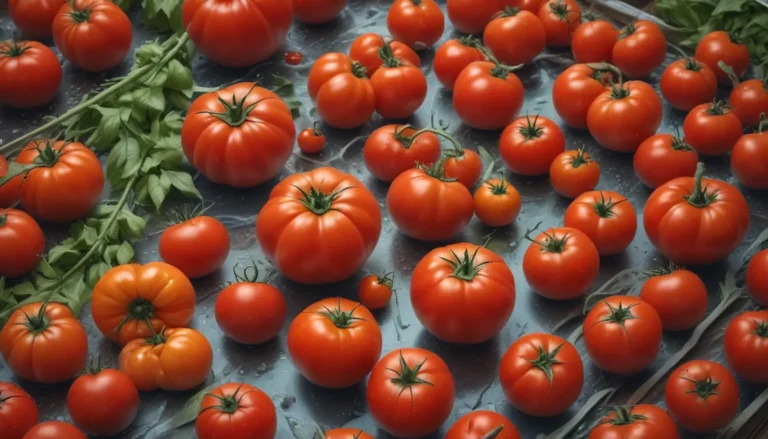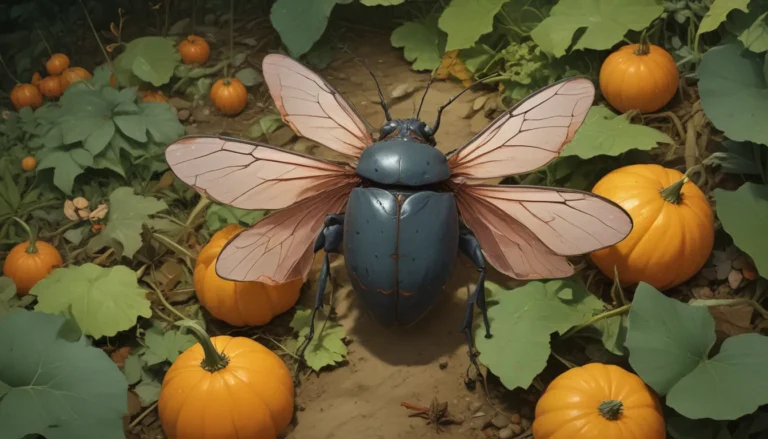Mastering the Art of Identifying and Controlling 13 Common Pepper Pests

Peppers are one of those vegetables that can spark a love-hate relationship. Some people, like me, absolutely adore them, while others, like my mom, can’t stand them. Unfortunately, pests seem to also have a passion for pepper plants, causing issues for gardeners year after year.
In this comprehensive guide, we’ll delve into the world of 13 common pepper pests, equipping you with the knowledge and tools to become a bug assassin like me. From identifying these pests to implementing effective control measures, we’ve got you covered.
The Pesky Culprits: 13 Common Pepper Pests
- Aphids
- Armyworms
- Corn Borers
- Corn Earworms
- Cucumber Beetles
- Cutworms
- Flea Beetles
- Hornworms
- Pepper Maggots
- Pepper Weevils
- Potato Leafhoppers
- Spider Mites
- Thrips
Pest problems in your garden can often indicate an imbalance in your garden ecosystem. Even the healthiest garden can fall victim to these pesky invaders from time to time. Identifying the specific pests plaguing your pepper plants is crucial in effectively combatting infestations.
1. Aphids
Aphids are notorious for targeting a wide range of plants, including peppers. These small, sap-sucking insects can be green, orange, or yellow, with varying wing configurations. Telltale signs of an aphid infestation include clusters of bugs on the stems and undersides of leaves, as well as wilting, stunted growth, and honeydew residue on plants.
Combatting aphids can involve introducing natural predators like ladybugs and lacewings, as well as using a forceful stream of water to dislodge the insects from your plant. Learn more about preventing and managing aphids in our detailed guide.
2. Armyworms
Armyworms, such as beet and fall armyworms, are common threats to pepper plants, particularly in southern regions of the United States. These voracious larvae chew through foliage, compromising plant health and yield. Beneficial insects like parasitoid wasps and minute pirate bugs can help control armyworm populations, along with the strategic use of beneficial nematodes and entomopathogenic fungus.
Products like BotaniGard 22WP and NemAttack Beneficial Nematodes are effective in combating armyworm infestations. Follow manufacturer instructions carefully for optimal results.
3. Corn Borers
European corn borers pose a significant threat to pepper plants in certain regions. These pests lay eggs on plant foliage, with larvae tunneling into stems and fruit, leading to damage and disease susceptibility. Solutions like Bacillus thuringiensis products can help control corn borers, safeguarding your pepper crop.
Products like Bonide Thuricide are formulated to target corn borers effectively. Early intervention is crucial in protecting your plants from devastating damage.
4. Corn Earworms
Corn earworms are year-round nuisances that target various vegetable crops, including peppers. These pests can be controlled using similar methods as armyworms, such as biological controls and natural predators. Vigilance in monitoring and early intervention are key to preventing widespread infestations.
5. Cucumber Beetles
Cucumber beetles are damaging pests that feed on pepper plants at all growth stages, causing jagged leaf edges and transmitting diseases. Companion planting with repellent crops like nasturtiums and introducing beneficial insects are effective strategies for managing cucumber beetle populations. Consider using beneficial nematodes and entomopathogenic fungus for targeted control.
6. Cutworms
Cutworms are sneaky pests that feed on plant stems, causing plants to collapse seemingly overnight. Protective measures like collars, organic insecticides, and beneficial nematodes can help prevent cutworm damage. Gardeners should proactively monitor for signs of cutworm activity and implement control measures promptly.
7. Flea Beetles
Flea beetles are common garden pests known for creating shotholes in plant foliage. These pests can be controlled through trap cropping, beneficial nematodes, and natural enemies. Utilizing products containing Beauveria bassiana can effectively target flea beetles, safeguarding your pepper plants from damage.
8. Hornworms
Pepper and tomato hornworms are large, voracious pests that feed on pepper plants, causing significant damage. Manual removal and beneficial insects like lacewings are effective means of controlling hornworm populations. Consider introducing green lacewing eggs to your garden to combat hornworm infestations.
9. Pepper Maggots
Pepper maggots target pepper plants, causing extensive damage by mining through fruits. Implementing preventive measures like floating row covers and beneficial nematode applications can help protect your pepper crop from maggot infestations. Planting thin-walled pepper varieties may deter pepper maggots from targeting your plants.
10. Pepper Weevils
Pepper weevils are harmful pests that can impact pepper plants in warm regions of North America. Implementing cultural practices like prompt fruit removal and targeted insecticide applications can help manage pepper weevil infestations. Gardeners should remain vigilant in monitoring for signs of weevil damage and take immediate action to prevent further crop damage.
11. Potato Leafhoppers
Potato leafhoppers are common pests that feed on the leaves of pepper plants, causing cosmetic damage. Beneficial insects and natural remedies like diatomaceous earth can help keep leafhopper populations under control. Supporting plant health through proper irrigation practices can also aid in protecting pepper plants from leafhopper damage.
12. Spider Mites
Red spider mites are tiny pests that can wreak havoc on pepper plants, causing leaf discoloration and stunted growth. Regularly spraying plants with water and pruning infected branches can help manage spider mite populations. Gardeners should remain vigilant in monitoring for spider mite activity and take prompt action to protect plant health.
13. Thrips
Thrips are minuscule insects known for causing damage to plant foliage and spreading diseases. Preventing thrips infestations through reflective mulch and other protective measures is crucial in safeguarding your pepper plants. Avoiding insecticides and focusing on disease prevention can help mitigate thrips damage to your garden.
Creating a Pest-Resistant Garden
While pest infestations can be frustrating, creating a healthy and balanced garden ecosystem can significantly reduce the risk of pest problems. Planting native species to attract beneficial insects, rotating crops, and minimizing pesticide use are essential practices for maintaining a pest-resistant garden.
As you battle with pepper pests, remember to share your experiences and insights in the comments section below. By learning from each other, we can collectively overcome pest challenges and grow thriving pepper plants.
For further exploration of peppers, consider diving into these informative guides:
- How to Plant and Grow Hot Peppers
- How to Plant and Grow Ghost Peppers
- Tips for Growing Banana Peppers
With a proactive approach and a wealth of knowledge, you can effectively manage common pepper pests and enjoy a bountiful harvest. Happy gardening!
*





